The Lost 116 Pages: Reconstructing the Book of Mormon's Missing Stories
$29.95
By Don Bradley
- “An extraordinary book.” — Journal of Book of Mormon Studies
- “A fresh, provocative viewpoint.” — Richard L. Bushman
- “Extraordinary.” — Daniel C. Peterson
- “A landmark work.” — Phil Barlow
“The perfect supplement for Latter-day Saints preparing to study the Book of Mormon.” — Book of Mormon Central- “Invites me to think about the Book of Mormon in fresh and meaningful ways.” — Brad Wilcox



Available in ebook for Kindle, Apple, Google Play, Nook, and Kobo.
Also available through Amazon, Deseret Book, Benchmark Books, FairMormon, and other retailers.
Download a free sample preview.
Book Description:
On a summer day in 1828, Book of Mormon scribe and witness Martin Harris was emptying drawers, upending furniture, and ripping apart mattresses as he desperately looked for a stack of papers he had sworn to God to protect. Those pages containing the only copy of the first three months of Joseph Smith’s translation of the golden plates were forever lost, and the detailed stories they held forgotten over the ensuing years—until now.
In this highly anticipated work, author Don Bradley presents over a decade of historical and scriptural research to not only tell the story of the lost pages but to reconstruct many of the detailed stories written on them. Questions explored and answered include:
- Was the lost manuscript actually 116 pages?
- How did Mormon’s abridgment of this period differ from the accounts in Nephi’s small plates?
- Where did the brass plates and Laban’s sword come from?
- How did Lehi’s family and their descendants live the Law of Moses without the temple and Aaronic priesthood?
- How did the Liahona operate?
- Why is Joseph of Egypt emphasized so much in the Book of Mormon?
- How were the first Nephites similar to the very last?
- What message did God write on the temple wall for Aminadi to translate?
- How did the Jaredite interpreters come into the hands of the Nephite kings?
- Why was King Benjamin so beloved by his people?
Despite the likely demise of those pages to the sands of time, the answers to these questions and many more are now available for the first time in nearly two centuries in The Lost 116 Pages: Reconstructing the Book of Mormon’s Missing Stories.
AuthorCast interview with the Author:
Comprehensive Table of Contents:
.
Introduction: Looking for What Was Lost
The Story Behind This Book
Methodology for Reconstructing the Missing Stories
Addressing Both Latter-day Saint and Non-Latter-day Saint Audiences
The Structure of this Book
Key Terms and Use of Scripture Citations
The Purposes of this Book
Acknowledgments
Part 1. The Lost Pages
1. The Ark of the New Covenant
Sacred Things
Purification
Recovering a Lost Book
The Golden Plates and Jewish Festivals
2. The Sealed Book
“Wicked Men”
“Sealed by the Hand of Moroni”
“Read this, I Pray Thee”
3. Translating the Nephite Record
“I Will Prepare unto My Servant a Stone”
“Sight to Translate”
“The Light which Shineth in Darkness”
Written by the Finger of God
Piercing the Veil: A Glimpse of Translation by the Interpreters
4. The Manuscript Theft
Trouble in the Harris Home
The Crime
The Suspects
The Revelatory Explanation for the Manuscript Loss
Narrowing the Mystery
5. The Long Blue Lost Manuscript
The Blue Foolscap Manuscript
The Manuscript Length
The Lost 200 Pages?
The Manuscript’s Length via the Time Spent Translating It
Earlier Scribes of the Lost Manuscript
Far More than 116 Pages
Part 2. The Missing Stories
6. Reconstructing the Lost Manuscript
The Small Plates as the Replacement Solution
Mormon’s Segue
Mormon’s Source for His Abridgement
Implications from Joseph Smith’s Preface
The Hebraic Lost Manuscript
Undoing the Exile: Recreating Israel in the New World
Reconstructing the Missing Stories
7. A Passover Setting for Lehi’s Exodus
Fayette Lapham’s Interview with Joseph Smith Sr.
Fayette Lapham’s Account of Nephi’s Quest for the Brass Plates
Historical and Biblical Context of Passover
A Passover Setting for Lehi’s Exodus
A Passover Setting for Nephi’s Quest for the Brass Plates
Additional Insights into Nephi’s Quest
Implications of a Passover Setting for Lehi’s Exodus
8. Lehi’s Tabernacle in the Wilderness
Lehi’s Tabernacle
Memorials of the New Exodus
Wandering in the Wilderness
9. The Seven Tribes of Lehi
The Lineages of Laban, Ishmael, and Zoram
The Seven Tribes of Lehi
10. Nephi’s Conquest
The Biblical Conquest
Lehi’s Scouts
The Nephite-Lamanite Split
Previous Inhabitants of the Promised Land
The Sword of Joshua
The Lamanites as Canaanites
Nephi’s Laws of War
Assessing Nephi’s Conquest
11. Nephi’s Temple
The City of Nephi and the Temple of Nephi
The Nephite High Priest
The Nephite Relics and Ark
Nephite Temple Worship
The Nephite Temple and the Restoration
12. The Lost Middle Period
What We are Missing
What Can We Say about the Lost Period?
Textual Clues on the Geography of the Lost Period
Sacred Burial Places
13. God and Aminadi in the Temple
Amulek’s Forefather Aminadi
The Time of Aminadi
Aminadi as a Wisdom Figure
Interpreting the Writing on the Wall
Aminadi and the Destruction of the Year 320
Aminadi in the Lost Manuscript
Aminadi and the Nephite Temple
14. The Mosian Reform
The Land of Nephi Before and After Mosiah1
The Life of Mosiah1
A Fallen Nephite Dynasty
Mosiah1’s Exodus
Mosiah1 in Fayette Lapham’s Account
Acquiring the Jaredite Interpreters
The Jaredite Plates
The People of Muloch
Uniting the Nephites and Mulochites
Mosiah and Messiah
Acquiring the Relics
Translations
The Mosian Reform
Knowing Mosiah1 Again
15. The Book of Benjamin
The Incomplete Book of Mosiah
Benjamin’s Lost Narratives
Benjamin and Messianic Expectations
Conclusion: Insights from What Was Found
1. A Jewish Book
2. The Centrality of Temple Worship
3. The Mormon Book
4. The Lost Pages and the Restoration.
5. The Book of Mormon and the Bible.
6. A Fractal Israel
7. A Messianic Manuscript
Bibliography
Scripture Index
Subject Index
Q&A with the Author:
.
Q:For readers less familiar with the "lost 116 pages" can you provide a brief synopsis of what they were and how they became lost?
A: After Joseph Smith dictated to scribes the first four and half centuries of the Book of Mormon’s chronicle of ancient Jewish settlers in the New World (the Nephites), the manuscript of this account was borrowed by the last of those scribes, Martin Harris. The manuscript later disappeared from Harris’s locked drawer and has been lost to history ever since. The current Book of Mormon text is therefore incomplete, substituting a shorter account for this lengthy missing narrative.
Q: Can you piece together what most likely happened to this lost early manuscript? Does the standard narrative that Lucy Harris likely destroyed them hold up? If not, why and what other possibilities should we consider?
A: When the manuscript disappeared, Martin Harris initially suspected his wife of the theft. Lucy Harris had been skeptical of her husband’s investment in the book and would have had motive to interfere. Lucy Harris has been regarded as the prime suspect in the theft since the late 1800s, and it has been widely presumed that she burned the manuscript. However, the explanation that Lucy Harris burned the manuscript was first proposed as only a speculative possibility a quarter-century after the fact, but the dramatic image of the disgruntled wife throwing the pages into the flames quickly caught fire and became increasingly popular with time. The further the historical sources get from the actual theft, the more likely they are to tell this story, indicating that it was the story’s sensationalism, rather than its accuracy, that led to its popularity. The first person to have suspected Lucy Harris of the theft, her husband Martin, abandoned this theory when he learned that his estranged but devout Quaker wife had denied on her deathbed knowing what happened to the pages.
The presumption that Lucy Harris stole the pages, acted alone in doing so, and burned them has prevented investigators from looking closely at other suspects, including a number of people who had previously attempted to steal other documents and relics associated with the Book of Mormon. Former treasure digging associates of Joseph Smith had attempted several times to steal the original Book of Mormon—the golden plates. And Martin and Lucy Harris had a son-in-law, a known swindler, who once stole the “Anthon transcript” of characters copied from the plates. Fixating on Lucy Harris as the only possible thief has blinded inquirers to noticing these obvious suspects.
Despite the widespread presumption that Lucy Harris was guilty of taking and burning the manuscript, the manuscript’s ultimate fate is an open question.
Q: You assert that the lost early manuscript might have been longer than 116 pages. Can you provide some reasoning for this? Can you also speculate on how long they may have been?
A: The number given for the length of the lost manuscript—116 pages—exactly matches the length of the “small plates” text that replaced that manuscript. This coincidence has led several scholars, beginning with Robert F. Smith, to propose that the length of the lost manuscript was actually unknown and the 116 pages figure was just an estimate based on the length of its replacement.
While we can’t know for sure the length of the lost manuscript, unless it turns up, we can do better than just guessing at its actual length, because we have several lines of evidence for this, all of which converge on a probable manuscript size. Joseph Smith reported that Martin scribed on the lost manuscript over a period of 64 days, which, given Joseph’s known translation rate would have produced a manuscript far larger than 116 pages. In line with this, Emer Harris, ancestor to a living Latter-day Saint apostle and brother to Martin Harris, reported at a church conference that Martin had scribed for “near 200 pages” of the manuscript before it was lost. A later interviewer recounted Martin himself reporting a similar scribal output when stating what proportion of the total Book of Mormon text he recorded. Since Martin was not the only scribe to work on the now-lost manuscript but, rather, the fifth such scribe, the manuscript as a whole would have been well in excess of the nearly 200 pages produced by Martin, likely closer to 300 pages. Other lines of evidence within the existing Book of Mormon text point to a similar length for the lost portion.
Q: What sources are used in this book to identify what was in the Book of Mormon's lost 116 pages?
A: To reconstruct the Book of Mormon’s lost stories this book makes use of both internal sources from within the current Book of Mormon text and external sources beyond that text. Internal sources from the Book of Mormon include, first, accounts from the narrators of the small plates of Nephi, which cover the same time period as the lost portion of Mormon’s abridgment, and, second, narrative callbacks in the surviving remnants of Mormon’s abridgment that refer to the lost stories. External sources used in the reconstruction include statements in the earliest manuscripts of Joseph Smith's revelations describing and echoing the lost pages, statements by Joseph Smith reported by apostles Franklin D. Richards and Erastus Snow, an 1830 interview granted by Joseph Smith, Sr., a conference sermon by Martin Harris’s brother Emer Harris, and reports by several other early Latter-day Saints and friends of Martin Harris.
Q: Can you provide a few examples of how your research into the lost early manuscript has increased your awareness of a Jewish core in the Book of Mormon text?
A: The research that went into this book has disclosed to me a Jewishness to the Book of Mormon that I could never have imagined. Through the lens of the sources on the lost manuscript, we can see the Jewishness in the Book of Mormon from the very start: according to Joseph Smith, Sr., the lost pages identified the Book of Mormon as beginning with a Jewish festival, namely, Passover. This Jewishness is particularly striking in the sources on the lost manuscript’s narrative of the book’s founding prophets Lehi and Nephi. Their narrative begins in that of the Hebrew Bible, at the start of the Jewish Exile. The recoverable lost-manuscript narratives of Lehi and Nephi show them seeking to build a new Jewish kingdom in the New World systematically parallel to the pre-Exile Jewish kingdom in the Old World. Having lost the biblical Promised Land, sacred city, dynasty, temple, and Ark of the Covenant, they set about re-creating these by proxy.
This Jewishness in the Book of Mormon is paralleled by a distinct Jewishness of the Book of Mormon’s coming forth. Reconstructing a chronology of the several earliest events in the Book of Mormon’s emergence shows every one of these events to have been keyed to the dates of Jewish festivals. In ways not previously appreciated, the Book of Mormon is a richly and profoundly Judaic book.
Q: In your book, you discuss temple worship among the Nephites. Can you summarize some of your findings?
A: Temple worship stands at the center of Nephite life and of the Book of Mormon’s narrative. The early events of Nephite history, as chronicled in the present Book of Mormon text and fleshed out further in the sources on the book’s lost manuscript, all build toward the ultimate goal of re-establishing Jewish temple worship in a new promised land. Re-establishing such worship required constructing a system closely parallel to that of Solomon’s temple. To meet the requirements of the Mosaic Law, the Nephites would have needed substitutes for the biblical high priest and Ark of the Covenant, with their associated sacred relics. Accordingly, the Nephite sacred relics—the plates, interpreters, breastplate, sword of Laban, and Liahona—systematically parallel the relics of the biblical Ark and high priest, showing how closely temple worship in the Book of Mormon was modeled on temple worship in the Bible.
Q: In what ways are the doctrines in the early lost Book of Mormon manuscript reflected in the doctrines of early Mormonism?
A: Earliest Mormonism has sometimes been understood as primarily a form of Christian primitivism, the New Testament-focused nineteenth-century movement to restore original Christianity. Yet already when we explore the earliest Mormon text, the lost portion of the Book of Mormon, we find a whole-Bible religion, one weaving Christian primitivist, Judaic, and esoteric strands into a distinctively Mormon restorationist tapestry of faith.
The Book of Mormon’s focus on the temple is also very Mormon. Temple worship among the Nephites not only echoes ancient Jewish temple worship, but it also anticipates temple worship among the Latter-day Saints. The recoverable narratives of the Book of Mormon’s lost pages portray the Nephite temple as not only a place in which sacrifices are performed but also one in which higher truths are taught in symbolic form, human beings learn to speak with the Lord through the veil, and people can begin to take on divine attributes.
Q: What are you hoping readers will gain from your book?
A: This book’s earliest seed was my childhood curiosity about the Book of Mormon’s lost pages. That seed grew in adulthood when I realized how knowing more about the Book of Mormon’s lost pages could illuminate its present pages. On one level, this new book is a book about the Book of Mormon’s lost text, pursuing the mystery of what was in the lost first half of Mormon’s abridgment. On another level, this is a book about understanding more deeply the Book of Mormon text we do have, since the last half of any narrator’s story is best understood in light of the first half. Researching what can be known about the lost manuscript has helped me to more fully recognize the Book of Mormon’s richness, understand its messages and meanings, and grasp its power as a sacred text. My hope is that recapturing some of the long-missing contexts behind our Book of Mormon will also expand others’ understanding of and appreciation for this remarkable foundational scripture of Latter-day Saint faith and inspire readers to delve deeper into the Book of Mormon.
Don Bradley
December 2019
Praise for The Lost 116 Pages:
“Don Bradley has written an extraordinary book. His work is based in a principle of equal care: care for texts despite their status as history, letter, scripture, or story. This care allows Bradley to read in a particular way, always looking at the traces within the text that point beyond its received form and content, constructing potential connections with a variety of other seemingly dissimilar texts and traces. I see Bradley’s scholarship here as speculative in the best of all its senses: willing to see something new. In doing so, Bradley produces the rare volume that will appeal to a broad audience: scholar and lay, member and non-member. It is fitting that a project centered on the Book of Mormon—even the portion of the Book of Mormon that no longer exists—does so in a way that draws on the universal essence at the heart of the book itself.” — Jenny Webb, Journal of Book of Mormon Studies
“Don Bradley shows his usual ingenuity in taking on the seemingly impossible task of reconstructing the lost 116 pages. Working with the hints and clues scattered through the Book of Mormon and other documents, he points toward a a strong Hebrew bent in the lost pages, helping us to see that the Book of Mormon that we do have was also shaped by Hebrew culture. A fresh, provocative viewpoint.” — Richard L. Bushman, author of Joseph Smith's Gold Plates: A Cultural History and Joseph Smith: Rough Stone Rolling
“Don Bradley’s ability to see connections the rest of us miss is the stuff of legend. What he has assembled in this study is among the most audacious attempts to make sense of the Book of Mormon yet seen. This is a book that rewards reading, re-reading, and re-re-reading.” — Joseph M. Spencer, author of The Vision of All: Twenty-five Lectures on Isaiah in Nephi’s Record
“Extraordinary. Sparkling with fresh and important insights into the history, nature, and contents of the lost portion of the Book of Mormon—and of the portion that we still have.” — Daniel C. Peterson, editor, Interpreter: A Journal of Latter-day Saint Faith and Scholarship
“Don Bradley’s years of ingenious sleuthing have yielded a landmark work. Its methods and conclusions will be discussed and refined for years to come. It presents an enthralling case for the contents of the missing manuscript pages of the early Book of Mormon, which in turn sheds light on the extant Book of Mormon and on the Bible itself. The volume will intrigue church members, their observers, and scholars interested in processes of scripturalization, canonization, and textual reconstruction.” — Phil Barlow, associate director of the BYU Maxwell Institute and a Neal A. Maxwell Research Associate
“Bradley’s The Lost 116 Pages is the perfect supplement for Latter-day Saints preparing to both study the Book of Mormon for Come Follow Me and commemorate the Restoration in a bicentennial year.” — Book of Mormon Central
“Well reasoned, well researched, and well done! I loved it! This book opened my eyes to possibilities I'd never considered before. The inferences Don Bradley has drawn not only made sense, but invited me to think about the Book of Mormon in fresh and meaningful ways. The author wrote about how his own testimony once wavered and how a deep study of the Book of Mormon revived it. This book is the result of that study and proof of the truthfulness of President Benson's promise that there is great power in the Book of Mormon that will flow into our lives the moment we begin a serious study of it. Most important, this book will bring you closer to Christ--the very one of whom the Book of Mormon is another witness.” — Brad Wilcox, author of The Continuous Atonement
“A remarkable breakthrough and a valuable resource for any student of the Book of Mormon.” — Jeff Lindsay, Mormanity
“The well-researched and considered conclusions he draws from the evidence will greatly enhance our understanding and appreciation of what we do have: the Book of Mormon. . . . Because of Bradley's tireless research over more than a decade, we now have a fuller understanding of not only the Lost 116 Pages, but of the Book of Mormon and the Bible.” — The Millennial Star
“Bradley reaffirms the value of continued study and close reading of the text of the Book of Mormon that we do have. In this sense, The Lost 116 Pages should be a valuable study companion for anyone interested in better understanding the Book of Mormon.” — Kevin Folkman, Association for Mormon Letters
“Bradley's research is impressive. . . . It's a great, fascinating read.” — Doug Gibson, Mormon History and Culture
“Don Bradley has done the world, both LDS and non-believer, a tremendous service with this book. . . . I can’t recommend this book enough.” — Bryan Sebesta, Association for Mormon Letters
“Bradley’s work provides what is undoubtedly the most comprehensive investigation into both the history surrounding the loss of the 116 pages and their content.” — Stephen Smoot, Ploni Almoni: A Latter-day Saint Blog
About the Author:

Don Bradley is an author and independent historian specializing in the beginnings of the Latter-day Saint Restoration. He completed a Bachelor’s in History at BYU and a Master’s in History at Utah State University, where he wrote his thesis on “American Proto-Zionism and the ‘Book of Lehi’: Recontextualizing the Rise of Mormonism.” Don has performed an internship with the Joseph Smith Papers Project working with the earliest Joseph Smith sources. He was the primary researcher for Brian C. Hales's Joseph Smith’s Polygamy series. He has published on the translation of the Book of Mormon, plural marriage before Nauvoo, Joseph Smith’s “grand fundamental principles of Mormonism,” and the Kinderhook plates, and has forthcoming works on the Kinderhook plates and the First Vision. He lives in Springville, Utah.
More information:
338 pages
ISBN: 978-1-58958-760-1 (paperback); 978-1-58958-040-4 (hardcover)
Published November 2019
Press Sheet

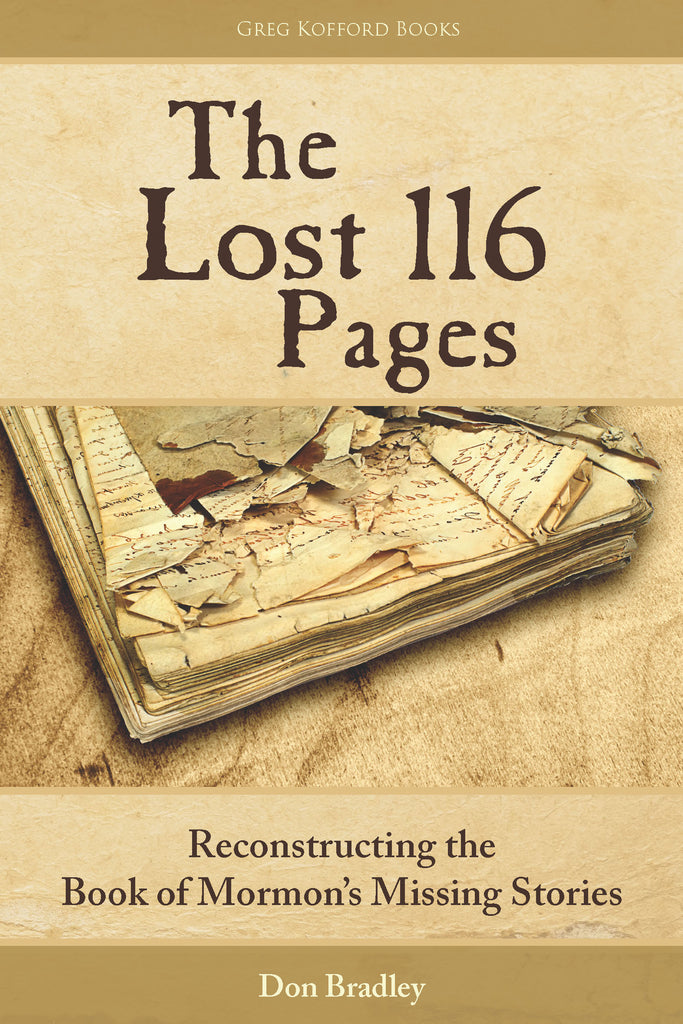



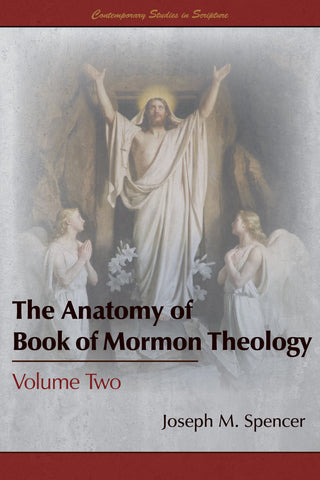
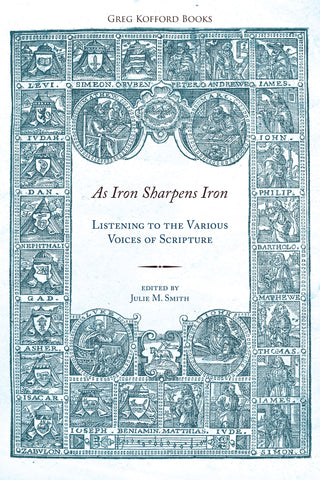
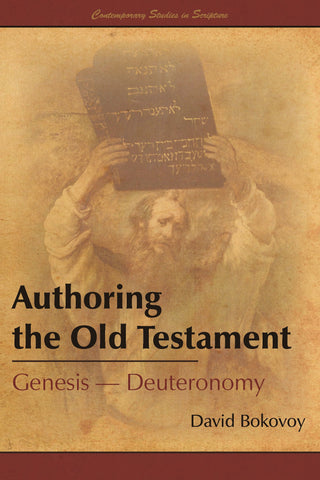
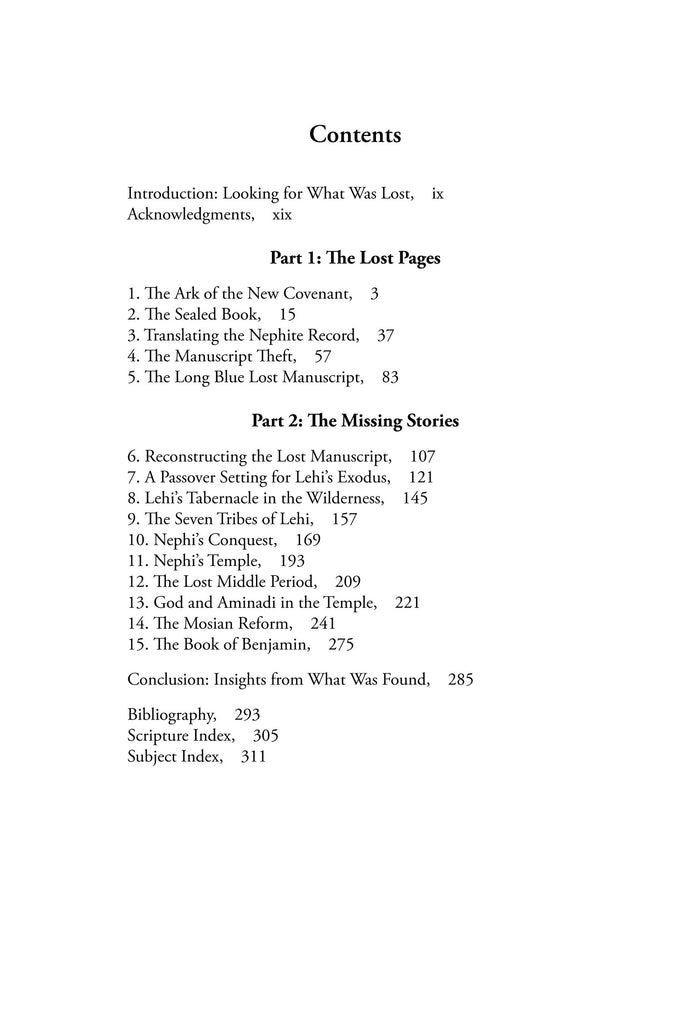
Share this item: